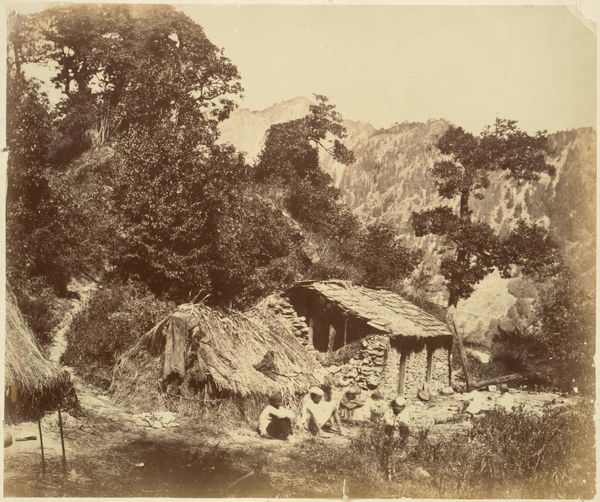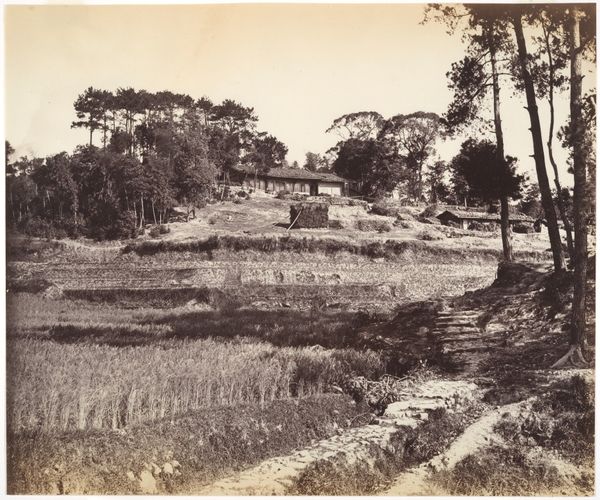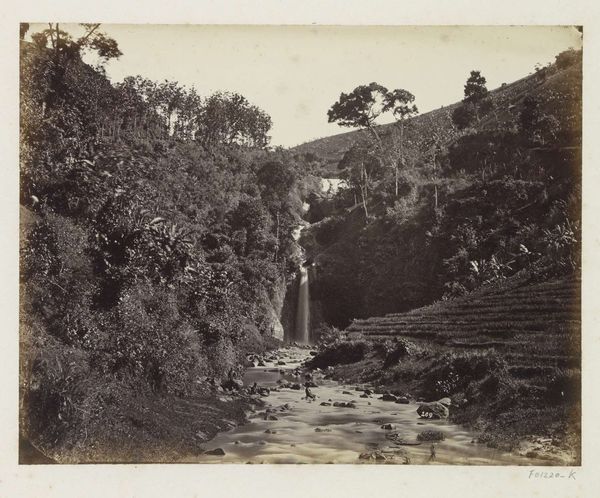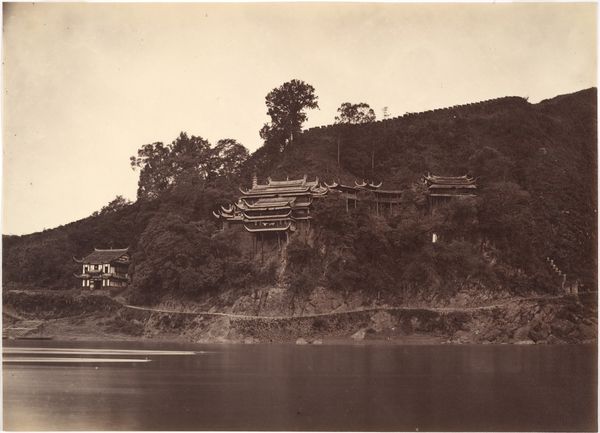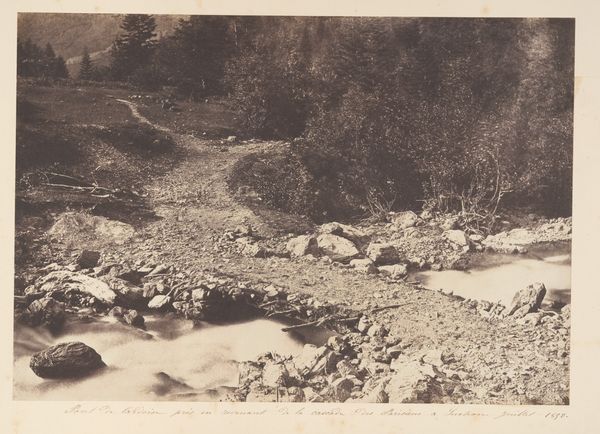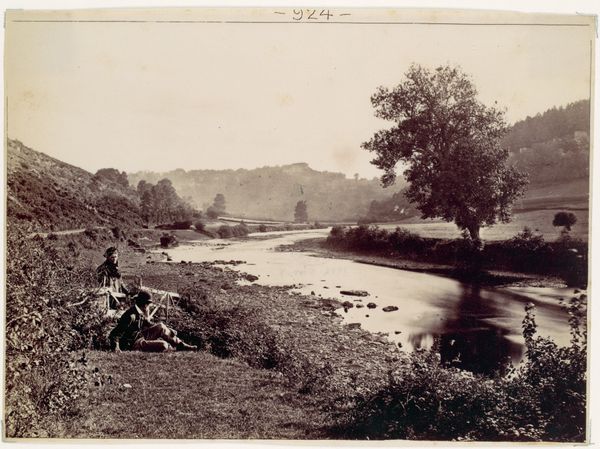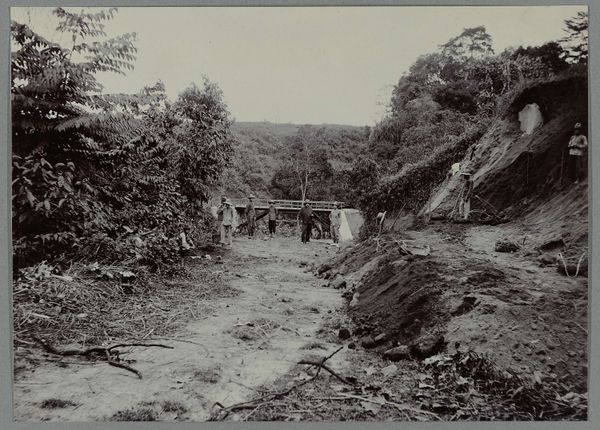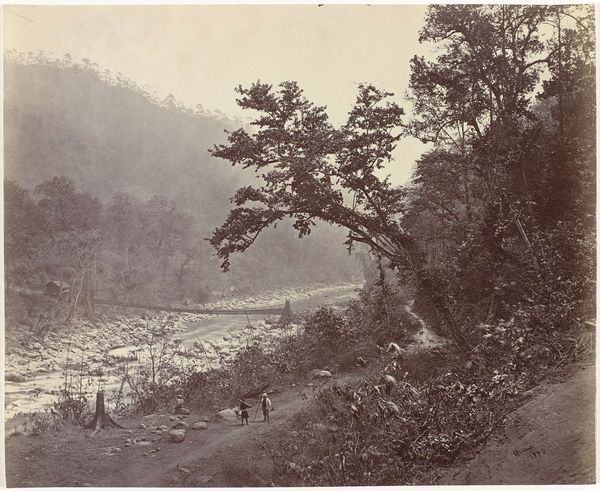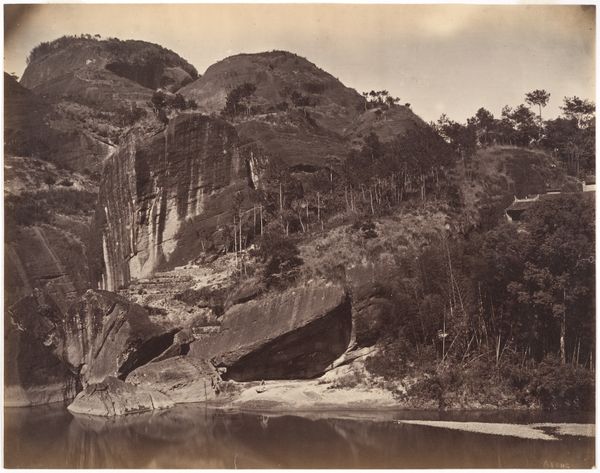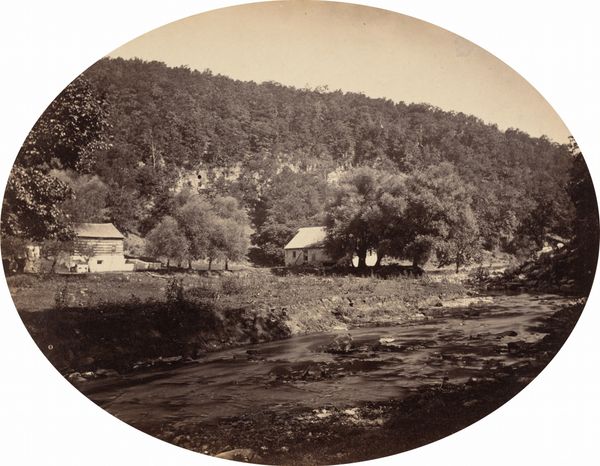
Dimensions: Image: 8 1/16 × 11 5/16 in. (20.4 × 28.7 cm)
Copyright: Public Domain
Editor: This is John Thomson’s "Flouring Mill at Yen-Ping," an albumen print from 1869. The scene has a documentary quality, yet it's softened by the photographic process and subdued light. It seems… timeless, somehow. What can you tell me about it? Curator: This photograph provides a window into a specific historical moment and carries a weight of colonial power dynamics. Thomson, as a Western photographer in China, was participating in a tradition of representation that often exoticized and othered the cultures he encountered. The mill itself signifies industry, but viewed through the lens of colonial expansion, what does it evoke for you? Editor: So, it’s not just a pretty picture of a mill. I guess I was seeing it removed from any historical context. Now I am wondering, did Thomson seek consent from the people impacted by this development? Curator: Precisely. This image exists because of a specific imbalance of power, and prompts important questions about agency, representation, and cultural exchange. Thomson’s work helped shape Western perceptions of China, often reinforcing existing stereotypes or creating new ones. Do you notice how the framing subtly positions the mill and, by extension, the community it serves, within a landscape ‘owned’ by the viewer? Editor: Now that you point it out, I do. I hadn’t considered the implications of who is looking and who is being looked at. Curator: Consider the context of 19th-century Orientalism. Photographs like this were often presented as objective records of “authentic” cultures. Critically engaging with these images forces us to confront uncomfortable truths about the legacy of colonialism and its lasting effects on how we perceive the world. Editor: I'll never see historical photographs the same way again. Thanks for the insightful analysis! Curator: My pleasure. The most compelling art encourages continuous examination of our histories and biases.
Comments
No comments
Be the first to comment and join the conversation on the ultimate creative platform.
